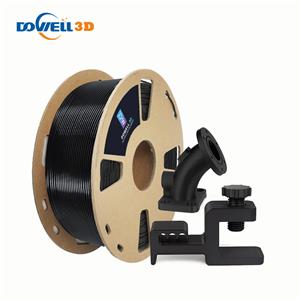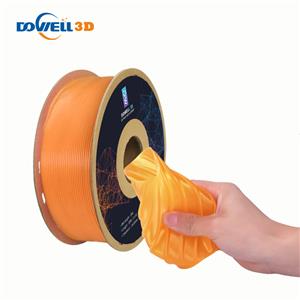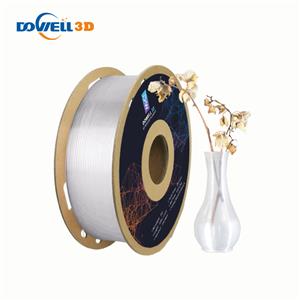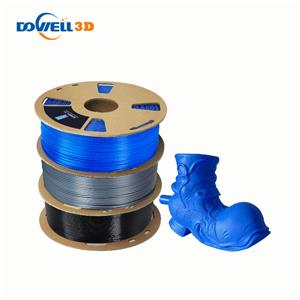How to Print in Wood 3D Filament: Tips and Tricks
How to Print in Wood Filament: Tips and Tricks
Brief Overview of Wood Filament in 3D Printing
Dowell Wood 3d filament combining the natural elegance of wood with the flexibility and precision of 3D printing. That's exactly what wood filament brings to the table. It's a special kind of material that blends tiny wood particles with a polymer base, usually PLA (Polylactic Acid). This concoction allows us to 3D print objects that not only look and feel like they're made of wood but also carry that delightful woody aroma. Whether it's for artistic projects, home decor, or practical applications, wood filament opens up a realm of possibilities, adding a touch of organic charm to our creations.
The journey of wood filament in the world of 3D printing is quite a story. It all started around 2012 when inventive minds began to explore how they could incorporate natural elements into 3D printing materials. Enter the wood filament, a brainchild that revolutionized the perception of 3D printing. Initially, the early wood filaments had more of a cardboard-like appearance and feel.
Today's wood filaments are much more sophisticated. They're not just about mimicking the look of wood; they're about replicating its very essence. We've seen innovations that range from different types of wood particles being used – like bamboo, birch, and even coconut – to advancements in how these filaments can be printed and post-processed. Modern wood filaments offer more durability, a more authentic wooden texture, and are easier to work with than their predecessors.
Composition and Properties of Wood Filament
Wood filament is like the perfect blend of nature and technology. It primarily consists of a mixture of PLA (Polylactic Acid) and fine wood particles or fibers. PLA is a popular, biodegradable thermoplastic derived from renewable resources like cornstarch or sugarcane. When combined with wood particles – which can be anything from sawdust to finer wood powders – the result is a filament that boasts the easy printability of PLA with the rustic charm and aroma of wood.
The proportion of wood in the filament can vary, typically ranging from 20% to 40%. This composition results in printed objects that have a wood-like appearance and texture, complete with the organic nuances and grain patterns of real wood. Plus, they often carry a subtle, pleasant woody scent that adds to their allure.
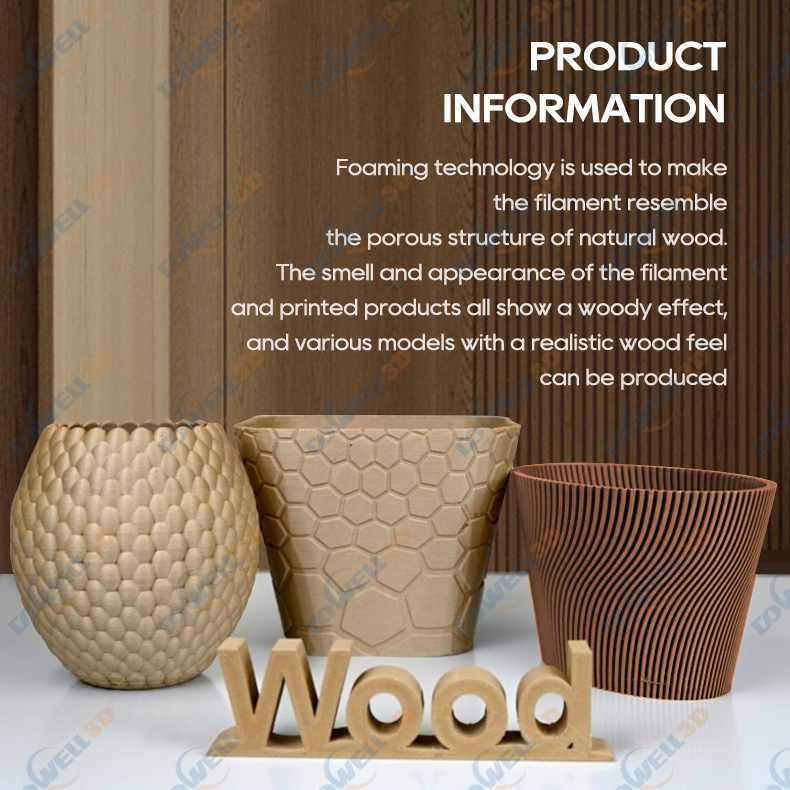
The proportion of wood in the filament can vary, typically ranging from 20% to 40%. This composition results in printed objects that have a wood-like appearance and texture, complete with the organic nuances and grain patterns of real wood. Plus, they often carry a subtle, pleasant woody scent that adds to their allure.
The percentage of wood content in the filament greatly influences the final print's appearance and characteristics. Higher wood content tends to give a more authentic wood look and feel but can also lead to increased brittleness and complexity in printing. On the other hand, a lower wood content maintains more of PLA’s properties, making it easier to print while still providing a wooden aesthetic.
Different types of wood used in the filament, like bamboo, birch, cedar, or coconut, also impact the final texture and color of the print. These variations allow for a range of creative possibilities, from mimicking specific wood types to experimenting with unique combinations for custom projects.
Comparing Physical Properties: Tensile Strength, Flexibility, and Durability
When it comes to physical properties, wood filament strikes a balance between the characteristics of PLA and the added wood particles. In terms of tensile strength, wood filament generally exhibits good rigidity and sturdiness, but it's not quite as strong or flexible as pure PLA. This makes it more suitable for decorative or non-load-bearing applications.
The flexibility of wood filament is relatively low compared to standard PLA, owing to the added wood particles that make the filament more brittle. As for durability, wood filament printed objects can last quite a while, especially if they are kept away from moisture and direct sunlight, which can degrade PLA over time.
In comparison to other filaments like ABS filament or PETG filament, wood filament is less about strength and more about aesthetics. It’s not the go-to for functional parts that require high durability or flexibility, but it's perfect for artistic creations, decorative items, or any project where a wooden look and feel are desired.
So, whether you’re a hobbyist or a professional, understanding these aspects of wood filament can help you make the most of its unique properties, leading to successful and visually stunning prints.

Selecting the Right Wood Filament Brand and Type
Choosing the right wood shreds is like finding the perfect ingredient for a special recipe. You want to look for a brand and type that suits your specific project needs. Each brand has its own unique blend of wood and PLA, and the type of wood used varies greatly - from birch to bamboo and even exotic types like coconut! Think about what you aim to create. Do you want a filament with a rich, woody scent? Or do you want a specific wood color or texture? Brands like Dowell 3d filament are often mentioned for their quality and consistency. Remember, reliable filament, neat wiring, and precise wire diameter control can make your 3D printing creations come to life.


